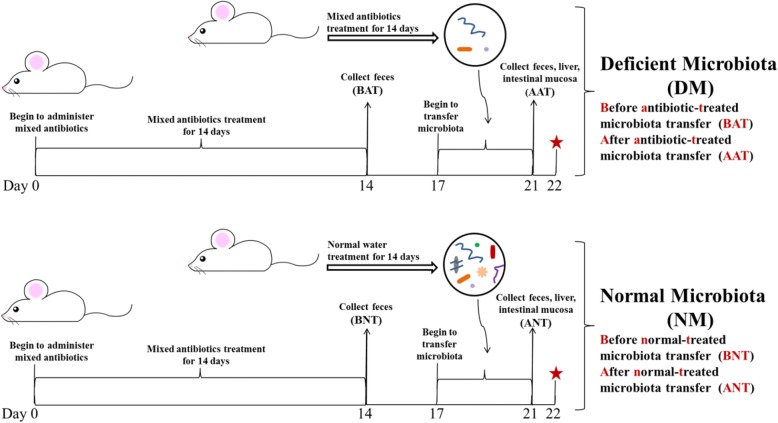Fig. 4.
Experimental design of microbiota transfer model based on the antibiotic cocktail-treated rats. Two groups of rats reached a near germ-free state after 14 days of antibiotic cocktail treatment, and these rats were transplanted with gut microbiota from the antibiotic-treated and untreated rats for 4 days to obtain a deficient microbiota group and a normal microbiota group (n = 11). Before and after microbiota transplantation, fresh feces of rats was collected, and after microbiota transplantation, rats were euthanized to collect liver and small intestinal mucosa (BAT: before antibiotic-treated microbiota transfer; BNT: before normal-treated microbiota transfer samples; AAT: after antibiotic-treated microbiota transfer; ANT: after normal-treated microbiota transfer, n = 5). The remaining rats were used to investigate pesticide bioavailability (n = 6). The red star means the beginning of pesticides exposure

